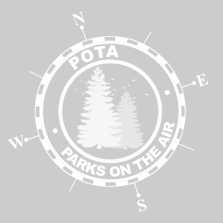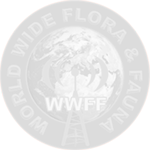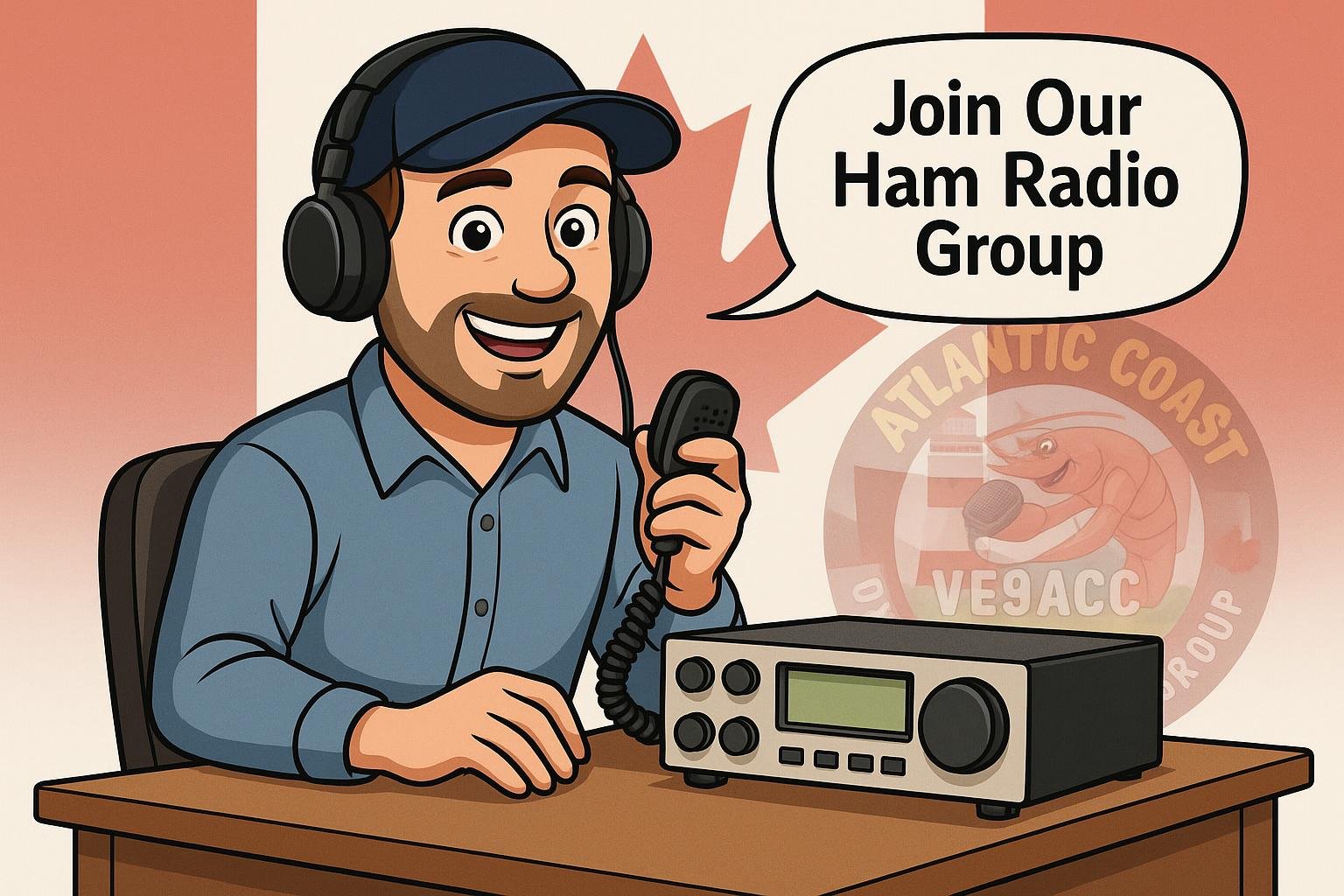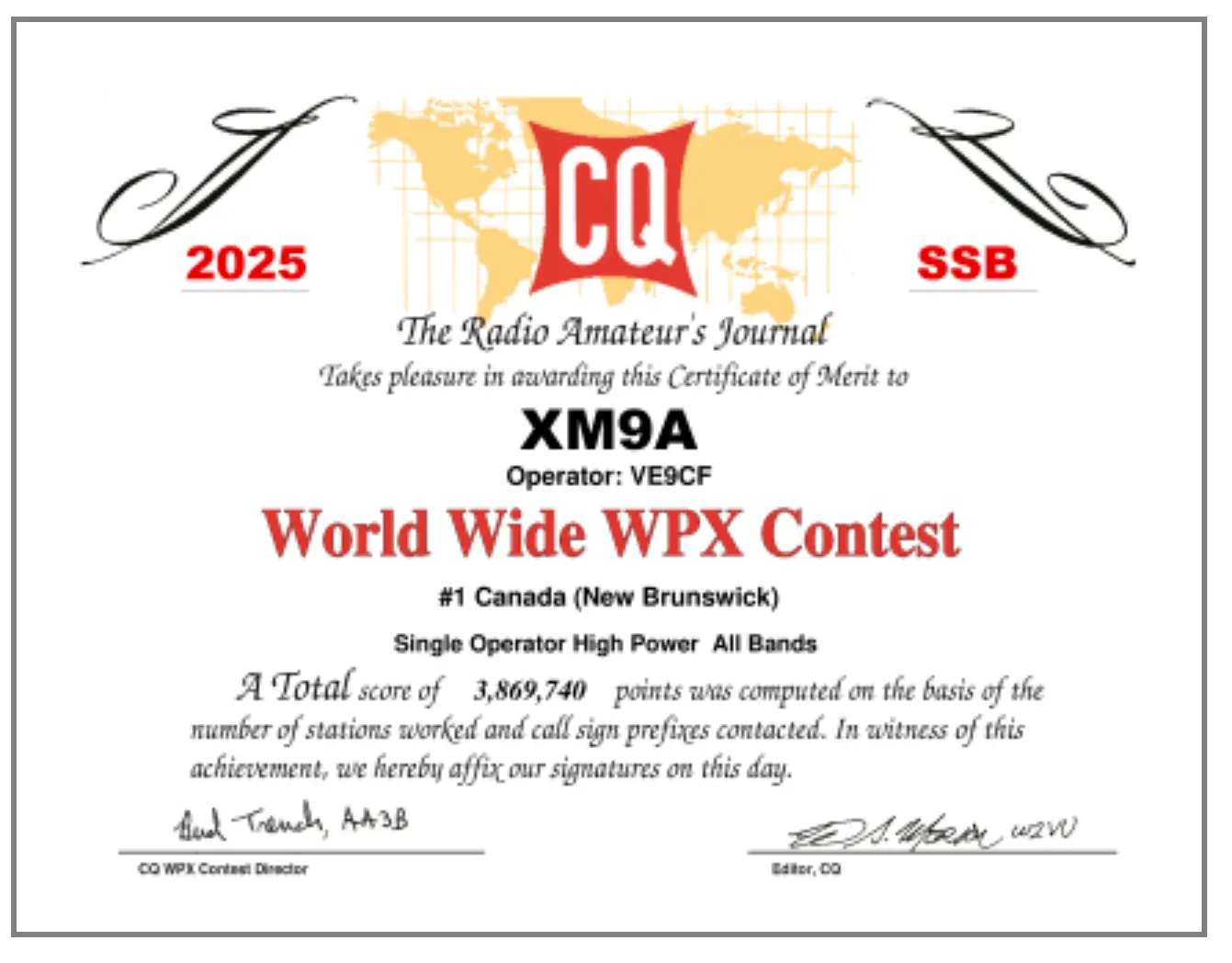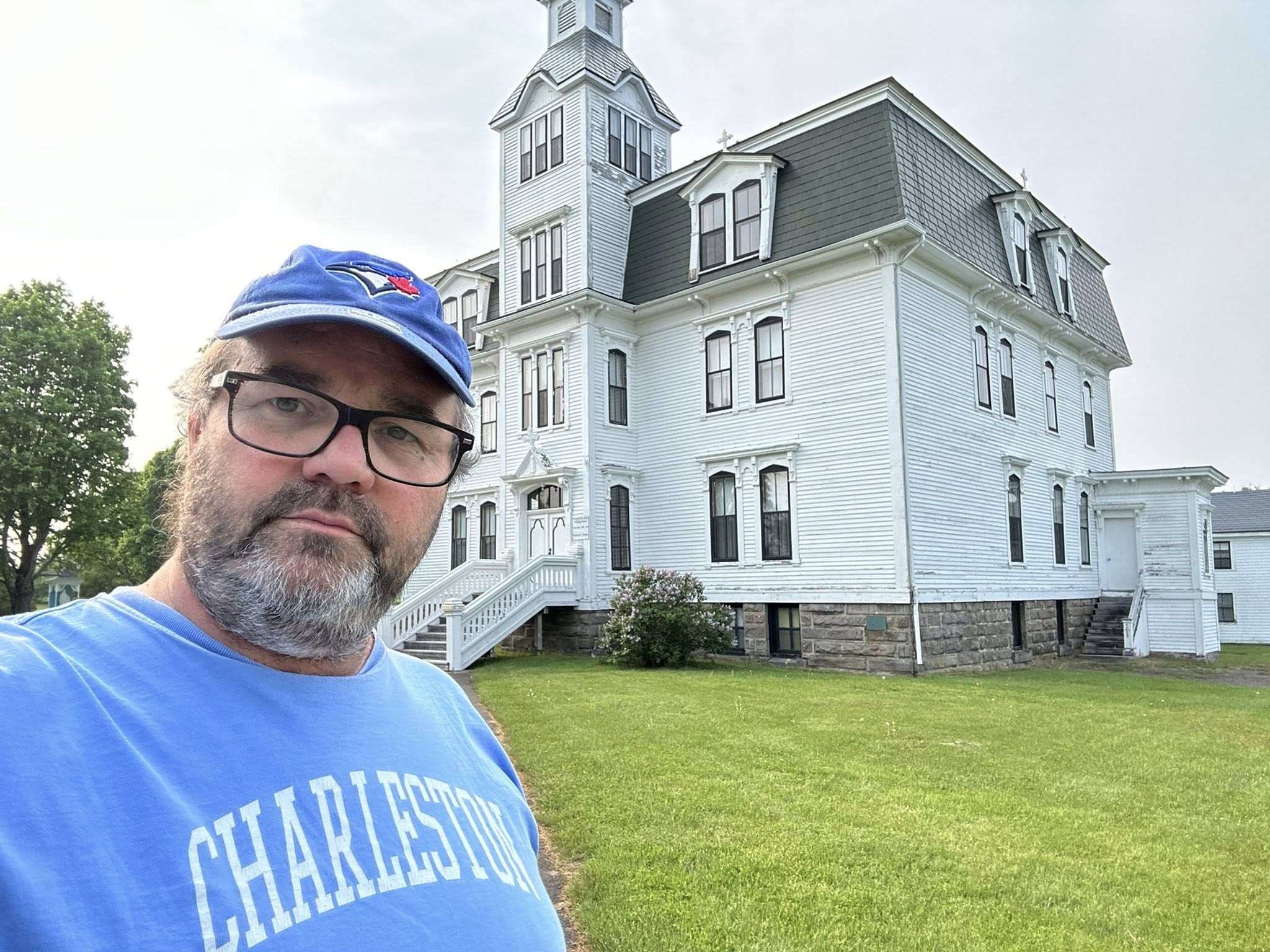Which Parks On The Air Program Is Better? WWFF or POTA? A Friendly Ham Radio Operator's Comparison
Amateur radio operators love taking their gear outdoors, and two popular programs make this adventure even more exciting: Parks on the Air (POTA) and World Wide Flora and Fauna (WWFF). Both programs encourage hams to set up stations in parks and protected areas, creating unique opportunities for radio contacts.
While both POTA and WWFF are excellent programs, POTA offers a more straightforward approach, easier entry points for newcomers, simpler logging requirements, and a more user-friendly digital platform. The POTA system provides an intuitive interface that helps you quickly find parks and log your contacts.
WWFF brings its charm with a focus on extended operations and conservation awareness. Its points system rewards longer activations, encouraging you to enjoy nature more while making radio contacts.
Key Takeaways
- POTA offers simpler entry requirements and logging procedures for new operators
- WWFF rewards longer park activations with a unique points-based system
- Both programs foster a welcoming community dedicated to outdoor radio operation
Overview of Parks On The Air Programs
Parks on the Air (POTA) is an exciting amateur radio activity where you operate your portable radio equipment from parks and nature reserves worldwide. The program began after the ARRL's National Parks on the Air celebration 2016.
When you participate in POTA, you can take on two main roles: Activator or Hunter. As an Activator, you'll set up your radio station in designated parks while Hunters try to make contact with Activators from their home stations.
POTA has grown into an international program with thousands of participating parks. You'll find opportunities to activate parks across Canada, the United States, and many other countries.
The WWFF (World Wide Flora & Fauna) program shares similar goals but focuses on promoting awareness of natural areas and environmental conservation through amateur radio operations.
Both programs offer award systems to recognize your achievements. You can earn certificates and recognition for activating different parks or contacting various park locations.
Key Benefits of Park Radio Programs:
- Connect with fellow radio enthusiasts worldwide
- Explore beautiful parks and natural areas
- Combine outdoor activities with your radio hobby
- Earn awards and recognition
- Help promote conservation awareness
What Is WWFF?
WWFF stands for World Wide Flora and Fauna in Amateur Radio. When you participate in WWFF, you'll join a global community that spans 59 different countries, each with its national program.
The program's motto is "Make nature your shack!" It encourages you to leave your indoor radio station and venture into the great outdoors. As a ham radio operator, you'll get to operate from protected natural areas while helping raise awareness about conservation.
You can access over 36,000 registered Protected Flora and Fauna areas worldwide. These special locations include national parks, nature reserves, and other protected environmental zones.
Unlike competitive contests, WWFF focuses on awards and recognition. You can earn colourful certificates for activating parks (being the operator broadcasting from the location) and hunting (contacting operators in parks).
The program aims to blend amateur radio skills with environmental appreciation. When you participate, you'll help draw attention to nature protection while improving your portable operation abilities.
WWFF offers a unique way to combine your radio hobby with outdoor adventure. You'll discover new parks, connect with operators worldwide, and contribute to raising awareness about protected natural areas.
What Is POTA?
Parks on the Air (POTA) is an exciting international radio sports program that lets you operate amateur radio equipment from parks and public lands. Think of it as combining your love of ham radio with the great outdoors!
When you participate in POTA, you can take on two main roles - an activator who sets up and operates from parks or a hunter who tries to contact activators. Both roles are equally fun and rewarding.
The POTA program includes thousands of designated park units worldwide where you can operate. These include national parks, state/provincial parks, historic sites, and other protected areas.
As you make contacts through POTA, you can earn various awards based on how many parks you activate or park-based stations you contact. The program provides an excellent way to improve your portable operating skills.
POTA's core objectives include encouraging amateur radio operators to get outdoors, promoting stewardship of parklands, and building a supportive community. The program is completely free to participate in.
You'll find POTA to be very welcoming to newcomers. The community is known for being friendly and helpful to operators of all experience levels. Many experienced POTA operators are happy to mentor those just getting started.
Key Features of WWFF
The World Wide Flora and Fauna program recognizes achievements through a robust award system that lets you earn certificates and plaques as you activate parks.
WWFF focuses heavily on conservation areas and protected nature spots. When you activate a park, you're helping promote worldwide awareness of these vital environmental spaces.
The program connects you with a truly global community of operators. You can activate parks across multiple countries and continents, creating opportunities for international contacts.
WWFF emphasizes longer activation periods. For a valid activation, you'll need 44 QSOs (contacts), which encourages you to spend more time exploring and enjoying each park location.
Your activations help create a detailed database of protected areas worldwide. Each time you operate from a new park, you contribute to this valuable resource for the amateur radio community.
The program offers special awards for both activators and hunters. You can earn recognition whether you prefer setting up in parks or contacting operators who are activating them.
Cross-program compatibility is a fantastic feature. Many WWFF locations overlap with POTA sites, allowing park visitors to participate in both programs simultaneously.
Key Features of POTA
Parks on the Air (POTA) lets you operate your amateur radio equipment from designated parks and nature areas worldwide. You'll find thousands of parks available in the program.
When you participate as an activator, you'll often feel like a rare DX, even within North America. This makes POTA incredibly exciting for both activators and hunters.
The program emerged after the success of ARRL's National Parks on the Air celebration in 2016. It has grown to include more than 9,000 parks in the United States alone.
POTA encourages amateur radio operators to get outdoors and combine their radio hobby with nature appreciation. You can participate year-round, offering unique operating conditions and experiences each season.
Key Benefits for Operators:
- No membership fees required
- Accessible to all license classes
- Simple logging requirements
- Supportive community
- Real-time spotting network
- Awards program
Your operating style is flexible - you can use any band, mode, or power level your license allows. Whether you prefer digital modes, CW, or voice operations, POTA welcomes your participation.
Comparison of WWFF and POTA
POTA and WWFF share many similarities - they're both programs where you can operate amateur radio from parks and natural areas. Both programs allow dual logging, so you can submit your contacts to both systems when operating from qualifying locations.
You'll find that WWFF has a more global focus and presence, while POTA is more prominent in the United States. This can affect your ability to make contacts depending on your location.
The reference numbers between the programs often align. For example, US-2265 in POTA corresponds to KFF-2265 in WWFF when operating from a park. This makes it easier for you to participate in both programs simultaneously.
Key Differences:
- Logging Requirements: POTA needs 10 contacts minimum, WWFF requires 44
- Digital Modes: Both support FT8/FT4, but with different calling protocols
- Award Systems: Each program has unique achievement recognition systems
- Coverage Areas: WWFF has a broader international participation
If you're new to park activation, POTA might be more approachable with its lower contact requirements. You can always expand into WWFF as you gain experience and want to connect with more international operators.
Operating Procedures in WWFF
When you activate a park in WWFF, you must make at least 44 contacts within 24 hours for it to count as a valid activation. This is different from other programs that require fewer QSOs.
POLO is an excellent logging option for your WWFF activations.
You must operate within the protected nature area's official boundaries. Before setting up your station, familiarize yourself with local regulations and obtain necessary permits.
Your operating style should reflect WWFF's focus on nature conservation. When setting up your antenna and equipment, be mindful of wildlife and avoid disturbing the natural environment.
It's good practice to spot yourself on the WWFF website or through spots.wwff.co. This helps other operators find you and increases your chances of achieving the required contact count.
QSL Procedures:
- Upload your logs to WWFF Logsearch
- eQSL and LoTW are both acceptable
- Paper QSLs are optional but appreciated by many collectors
Remember to document your activation with photos if possible. While not mandatory, it adds value to your activation and helps promote the natural beauty of these protected areas.
Operating Procedures in POTA
To activate a park in POTA, you must set up your portable radio station within the designated park boundaries. Parks on the Air® operations involve calling "CQ POTA" and sharing your park reference number to make contacts.
Your setup can be as simple or complex as you like. Many operators use a basic portable radio, battery power, and a wire antenna strung between trees. Ensure you follow local park rules about antenna setup and operating locations.
You'll need to log essential details like callsigns, time, frequency, and signal reports when making contacts. Many POTA activators use logging apps or paper logs to track their QSOs.
Key Requirements for a Valid Activation:
- Make at least 10 QSOs
- Stay within park boundaries
- Upload logs within 7 days
- Use proper POTA reference numbers
The POTA program welcomes operators of all skill levels. You can operate any mode you're licensed for, including voice, digital, or CW. Many activators find success with SSB (voice) on the HF bands.
Remember to be courteous to other park visitors and leave no trace of your operation. Pack out what you pack in, and avoid damaging any natural features while setting up your station.
Activator Experiences with WWFF
When you activate parks through WWFF, you'll join a vibrant community spanning 59 different countries. This global reach creates exciting opportunities for international contacts.
Your WWFF activations can lead to thrilling DX experiences. Many operators report that European hunters will quickly respond when spotted on the WWFF cluster, creating energetic pile-ups.
CW operators particularly enjoy WWFF, with lots of activity on 10, 12, 17 and 20 metres as solar conditions improve. You'll find plenty of opportunities to work DX stations using Morse code.
The program offers unique recognition for your efforts. Unlike contest-style operations, WWFF focuses on awards for activating and contacting protected areas, adding an extra element of achievement to your outdoor radio adventures.
Some activators have made remarkable numbers of contacts through WWFF. One operator shared they've made over 9,500 contacts as an activator, showing just how engaging the program can be.
You can also combine WWFF with other programs. Many operators participate in WWFF and POTA, maximizing their outdoor radio enjoyment and contact opportunities.
Activator Experiences with POTA
When you become a POTA activator, you'll discover a welcoming community of amateur radio enthusiasts who share your passion for outdoor radio operations.
Setting up your station in nature creates an exciting atmosphere that enhances your radio experience. You can choose from thousands of registered parks, making each activation unique and memorable.
POTA activators share their experiences with fellow operators through stories, photos, and tips. This helps build camaraderie and provides valuable insights for newcomers to the program.
Portable operations present challenges and rewards. Weather conditions, equipment setup, and finding the perfect spot become part of your adventure. Many operators love combining their favourite outdoor activities with radio operations.
Essential tips for successful activations:
- Scout your location beforehand
- Pack essential gear and spare equipment
- Bring weather protection for your station
- Start with simple antenna setups
- Take photos to share with the community
Experienced POTA operators recommend starting with smaller parks close to home. This helps you develop your portable operating skills before venturing to more remote locations.
Your fellow operators will be eager to contact you when activating a park. Being on the other end of a pileup adds to the thrill of operating outdoors.
Chaser Experiences with WWFF
When you chase WWFF activators, you'll discover a truly global experience. WWFF operates in 59 countries, allowing you to make contacts worldwide.
You'll notice WWFF puts a strong emphasis on nature conservation. The program's motto, "Make nature your shack!", reflects its focus on protected flora and fauna areas.
Your logging requirements as a WWFF chaser are straightforward. You need to contact activators operating from one of the more than 36,000 registered Protected Flora & Fauna areas.
The award system adds an exciting dimension to your chasing activities. You can earn colourful certificates and recognition for contacting protected areas worldwide.
Many chasers appreciate that WWFF activations tend to last longer than other programs. This gives you more chances to make successful contacts, especially during challenging band conditions.
The WWFF community is particularly welcoming to newcomers. The program's focus on conservation attracts environmentally conscious operators eager to share their knowledge and experiences.
Pro Tip: Carefully track your WWFF chaser contacts. Each contact with a protected area counts towards various awards and achievements in the program.
Chaser Experiences with POTA
You'll find a vibrant community of amateur radio enthusiasts who enjoy chasing POTA activations. Many operators have logged over 600 POTA references and love collecting awards.
As a chaser, you can participate from the comfort of your home station. Your role is to contact operators who are out activating parks, helping them reach the minimum of 10 QSOs required for a successful activation.
The POTA program welcomes you to join as either a chaser or activator—or both! Many participants enjoy both roles, as each offers its own unique excitement.
The chase can become quite addictive. You'll check the POTA spots website regularly to see which parks are currently being activated. Each new park contact brings you closer to earning prestigious awards.
A brilliant aspect of chasing is connecting with fellow radio enthusiasts across North America. Whether you're helping a new activator achieve their first successful activation or working a rare park, each contact creates a memorable experience.
Awards and Recognition in WWFF
The World Wide Flora and Fauna program rewards you for taking your radio operations into protected natural areas. When you activate or make contacts with these locations, you can earn colourful awards and certificates to recognize your achievements.
You can participate in WWFF across 59 different countries, each with its national program. This gives you incredible opportunities to contact operators in protected areas worldwide.
Your journey starts by contacting protected Flora and Fauna areas (PFF). There are over 36,000 registered locations globally where you can operate from or make contact with other activators.
To qualify for awards, you must make a minimum number of contacts from each location you activate. Keep detailed logs of your contacts to submit for award verification.
Remember that WWFF references are distinct from POTA references. For example, if you're operating in Canada, a VEFF reference number identifies a specific protected area in the WWFF system.
The program encourages you to "Make nature your shack" by getting outdoors and combining your radio hobby with environmental appreciation. Your participation helps raise awareness about protecting natural areas while earning meaningful recognition.
Awards and Recognition in POTA
Through Parks on the Air's recognition program, you can earn exciting awards as both an activator and a hunter. These awards showcase your dedication to getting outdoors and making contacts.
Getting your awards is straightforward - log in to your POTA account and visit the "My Stats and Awards" section. Your earned awards are available for instant download.
POTA offers various achievement awards based on the number of parks you activate or contact. You'll find awards for reaching specific park contact milestones and special recognition for activating rare locations.
The program encourages you to explore new parks and make more contacts by offering different award tiers. Each achievement adds to your collection of downloadable certificates that prove your POTA accomplishments.
Your awards demonstrate your commitment to the hobby and serve as motivation to continue participating. The more parks you activate or contact, the more recognition you can earn through the program.
Did you know? POTA is actively expanding its awards program. New awards are regularly added to give you even more opportunities to earn recognition for your radio adventures.
Community and Support
Parks on the Air (POTA) boasts a vibrant and welcoming community perfect for newcomers and experienced operators alike. You'll find friendly faces eager to help you get started with your first activation.
The POTA program offers excellent online resources, including active Facebook groups, Telegram channels, and a dedicated website with real-time spotting networks. You can easily connect with fellow operators and track your progress.
WWFF's global community spans continents, creating unique opportunities for international contacts. The program's emphasis on nature conservation attracts environmentally conscious amateur radio enthusiasts.
Both programs maintain active social media presence, but POTA's platform is more user-friendly for North American operators. You'll appreciate POTA's straightforward logging system and quick award processing.
Key Community Features:
- Active Discord servers
- Regular virtual meetups
- Mentorship programs
- Award tracking systems
- Real-time spotting networks
When you're starting, POTA's community tends to be more accessible for Canadian operators. Yet, WWFF offers unique opportunities to connect with operators worldwide who share your passion for nature and radio.
Accessibility and User Interface
Parks on the Air (POTA) offers a modern, user-friendly interface that makes tracking your activations straightforward. The POTA website is intuitive to navigate, with real-time spotting and comprehensive park listings at your fingertips.
The POTA mobile app gives you quick access to park information, maps, and spots while you're in the field. Through its digital platform, you can easily log contacts and submit your activations.
WWFF's interface is more basic but functional. While you might need more time to familiarize yourself with their system, it still provides the essential tools for logging and tracking park activities.
Both programs offer downloadable park databases, but POTA's search functionality simplifies finding nearby parks. You can quickly locate parks within a short driving distance of your location.
Key Platform Features:
- 🌐 POTA: Real-time spotting network
- 📱 POTA: Mobile-friendly interface
- 📍 WWFF: Traditional logging system
- 🗺️ Both: Downloadable park references
The spot integration in POTA helps you connect more effectively with other operators. When you activate a park, your spot automatically appears in the system, making it easier for chasers to find you.
Impact on Conservation Efforts
Both POTA and WWFF actively promote environmental awareness through amateur radio. When you activate parks, you're helping raise awareness about protected natural areas across the globe.
WWFF operates in 59 countries, creating a vast network of radio operators who draw attention to conservation areas. Your activities help showcase these protected spaces to fellow operators worldwide.
Your presence in these parks as a radio operator often sparks curiosity from visitors. These interactions create valuable opportunities to educate people about amateur radio and environmental preservation.
Key Conservation Benefits:
- Increased public awareness of protected areas
- Documentation of park visits and usage
- Support for park maintenance through entrance fees
- Creation of an active community of environmentally conscious operators
By participating in either program, you're contributing to a larger movement that combines technology with environmental stewardship. Your activations help demonstrate the recreational value of these spaces.
The programs encourage the responsible use of parklands. When you operate from these locations, you serve as an ambassador for both amateur radio and environmental conservation.
Your activities also help justify the continued protection of these spaces by showing they're actively used for recreational purposes. Each activation adds to the documented use of these valuable natural resources.
Final Thoughts on WWFF and POTA
POTA has gained massive popularity, especially in North America. There are far more active POTA operators than WWFF, making contact easier.
The beauty is that many parks overlap between the two programs. You can often submit your logs to both POTA and WWFF from a single activation, maximizing your awards potential.
POTA's website and logging systems are more user-friendly and modern. Their spotting network is particularly robust, helping you connect with other operators more efficiently.
If you're starting with park activations, POTA offers an excellent entry point with its active community and straightforward rules. The program continues to grow exponentially, making it an exciting time to join.
For the most rewarding experience, consider participating in both programs. Each offers unique awards and opportunities to connect with fellow radio enthusiasts worldwide.
Remember to check the specific requirements for each program before heading out. While they share similarities, their activation rules, and minimum contact requirements differ slightly.

